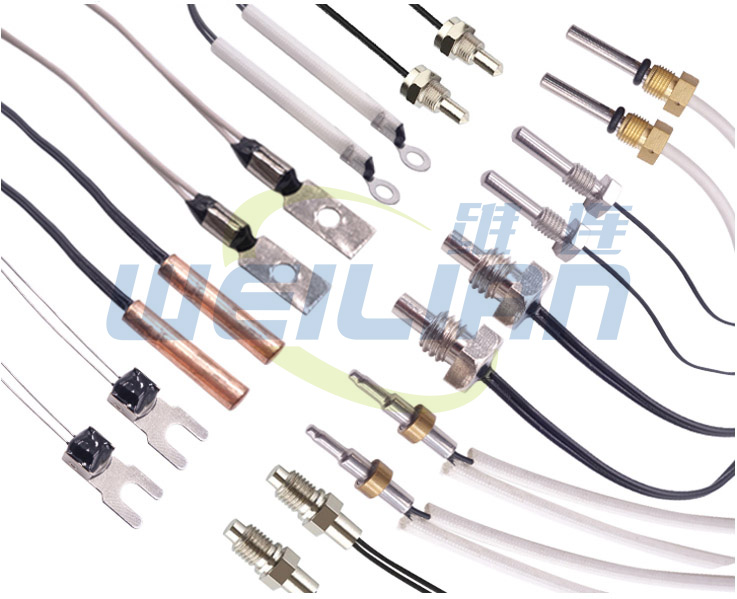
 How to choose the best temperature sensor
How to choose the best temperature sensor
When the design temperature detection circuit is important, it is important that you don't pay for what is beyond the actual needs. By understanding the requirements of the application, you can choose a best temperature sensor to minimize cost accuracy or reliability without affecting performance. There are several factors to consider when choosing a sensor. The following table lists them.
| Thermistor resistance | Platinum resistance temperature sensor | Thermocouple | Semiconductor Sensor | ||
| Temperature range | -50 to 250 ° C | -200 to 600 ° C | -200 to 1750 ° C, depending on the type | -70 to 150 ° C | |
| Stability | Epoxy coating: 0.2 ° C/Sealing Year: 0.02 ° C/year | Film: 0.05 ° C/year full line: 0.002 ° C/year | >1°C/year | 2°C/year | |
| Output | -4.4%/° C, flexible output, can be used as a resistance or voltage | 0.00385 Ohm/Celsius | 10 to 40 millivolta/° C | Various types (because the output is numbers, it can be anything), the common nominal resistor | |
| Linear | Need linear | Good linear | Non -linear | Linear | |
| Power Source | Any constant voltage or current | Any constant voltage or current | Self -Power Supply | 4-30 Voltage DC | |
| Typical corresponding time | Fast: 0.12 to 10 seconds | Very slow: 1 to 50 seconds | Slow: 0.2 to 20 seconds | Very slow: 5 to 60 seconds | |
| Accuracy | 0.05 to 1.5 ° C | 0.1 to 1 ° C | 0.5 to 5 ° C |
|
|
| Electrochemical sensitivity | Very low | Very low | Extreme, especially at the cold end | Depending on the circuit board layout | |
| Direction resistance affects accuracy | Very low | High sensitive, especially 3 line and 4 line configuration | No |
Temperature range
Select the temperature sensor first to consider the temperature range. For the operating environment of more than 1000, the thermocouple temperature sensor is usually the only choice. However, only a few applications involve this extreme temperature.
For most industries, medical, automobiles, consumers and general embedded systems, the typical working temperature range is much narrower. when? The semiconductor matrix is in use, and the range is limited. For example, the MCU score of commercial and consumer applications is 0 ° C to 85 ° C. The range of industrial application MCUs is expanded to -40 ° C to 100 ° C. Automotive MCU needs to run ° C to 125 ° C from -40. Therefore, engineers can usually choose to use any standard type temperature sensor.

